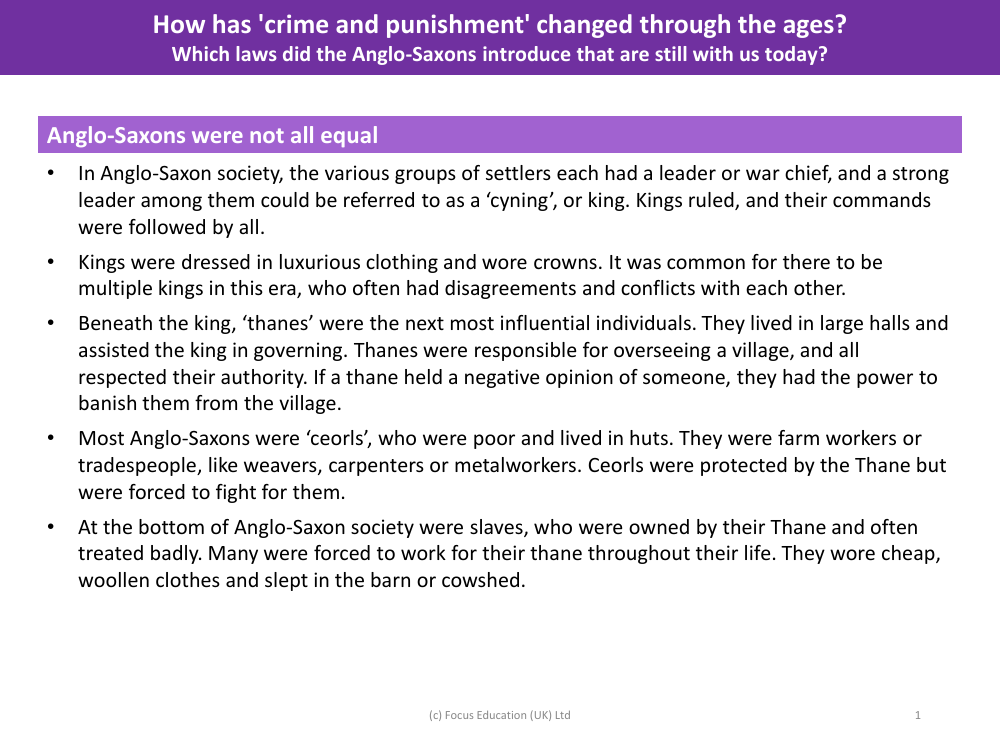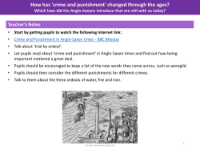Anglo-Saxons were not all equal info-sheet

History Resource Description
The social structure of Anglo-Saxon society was distinctly hierarchical, with each group of settlers led by a chief or war leader. Among these leaders, a particularly influential figure could earn the title of 'cyning', known in modern terms as a king. Kings wielded considerable power, with their commands being adhered to by all beneath them. These rulers were easily distinguishable by their luxurious attire and crowns. It was not uncommon for multiple kings to exist concurrently, which sometimes led to disputes and conflicts among them.
Directly below the king in the social hierarchy were the 'thanes', who held significant sway and lived in grand halls. Thanes played a key role in governance, assisting the king and managing the affairs of a village. Their authority was widely respected, and they had the power to exile individuals from the village if they deemed it necessary. The majority of the population were 'ceorls', typically poor and living in simple huts. These individuals were the backbone of the workforce, engaging in farming or trades such as weaving, carpentry, or metalwork. While ceorls received protection from their thane, they were also obliged to fight on their behalf. At the lowest rung of society were the slaves, who were property of their thane and often subjected to harsh treatment. They spent their lives toiling for their thane, dressed in inexpensive woolen garments and sleeping in basic quarters like barns or cowsheds.






